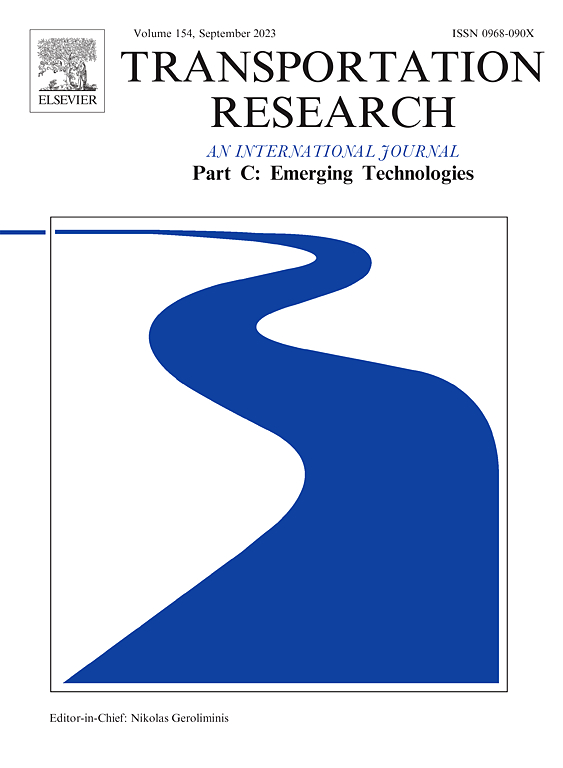Dynamic adjustment strategy of electric bus operations: A spatial branch-and-bound method with acceleration techniques
IF 7.6
1区 工程技术
Q1 TRANSPORTATION SCIENCE & TECHNOLOGY
Transportation Research Part C-Emerging Technologies
Pub Date : 2025-02-01
DOI:10.1016/j.trc.2025.105003
引用次数: 0
Abstract
Electric bus systems frequently encounter operational instability, resulting in delays, bunching and disturbed charging schemes. Advanced technologies like sensoring and wireless connectivity strongly support dynamic adjustments to improve the stability of electric bus systems, fostering flexibility responsiveness to changing operating conditions. This article explores the dynamic adjustment problem of electric bus operations to jointly generate bus charging schemes and timetable adjustments in a real-time decision-making process. We propose a mixed-integer nonlinear programming model for each decision stage, explicitly considering factors such as vehicle overtaking, passenger load, capacity limitations, and charging behaviors. To efficiently solve this problem, we design a spatial branch-and-bound method with multiple acceleration techniques of logical inference for bound contraction, bilinear-specific branching, and parallel computation. Indeed, the original mixed-integer nonlinear programming problem can be split into a series of mixed-integer quadratic programming problems with reduced domains. The acceleration techniques proposed could be easily customized to address other mixed-integer nonlinear programs in such branch-and-bound-based schemes. Computational experiments validate the effectiveness of the proposed adjustment strategy yielding feasible solutions that enhance headway regularity, energy savings and service quality. Additionally, our solution method efficiently tackles real-world scenarios of significant complexity, with up to 12 vehicles running 8 loops on a route comprising 54 stops, with an average of 5.11-seconds computational time, outperforming both the common commercial solver and standard spatial branch-and-bound approaches in computational speed.
求助全文
约1分钟内获得全文
求助全文
来源期刊
CiteScore
15.80
自引率
12.00%
发文量
332
审稿时长
64 days
期刊介绍:
Transportation Research: Part C (TR_C) is dedicated to showcasing high-quality, scholarly research that delves into the development, applications, and implications of transportation systems and emerging technologies. Our focus lies not solely on individual technologies, but rather on their broader implications for the planning, design, operation, control, maintenance, and rehabilitation of transportation systems, services, and components. In essence, the intellectual core of the journal revolves around the transportation aspect rather than the technology itself. We actively encourage the integration of quantitative methods from diverse fields such as operations research, control systems, complex networks, computer science, and artificial intelligence. Join us in exploring the intersection of transportation systems and emerging technologies to drive innovation and progress in the field.

 求助内容:
求助内容: 应助结果提醒方式:
应助结果提醒方式:


